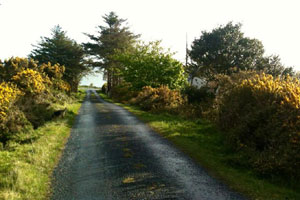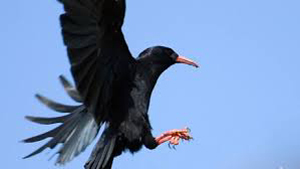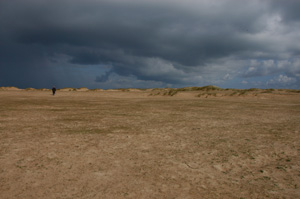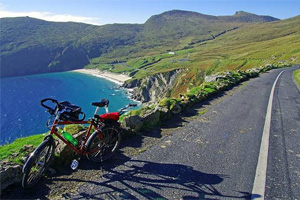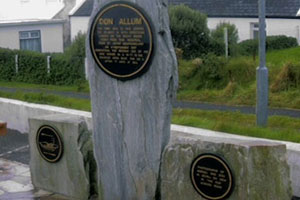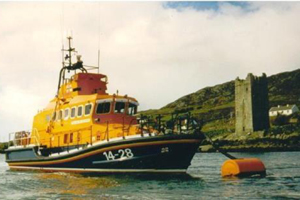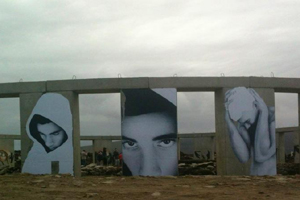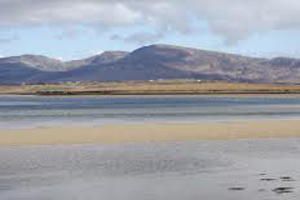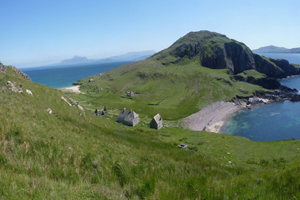For a small Island, Achill has a wealth of history and heritage, listed here are a selection to pique your curiosity:
Revd Edward Nangle: Born in Dublin in 1800, his family were The Barons of Navan for 600 years, he was the first Protestant in the family. In 1831 he decided to start a Protestant colony on The Island and moved to Achill permanently in 1834. Interestingly the mission initially preached to, and taught the Achill islanders in their native tongue, and Nangle himself learned Irish. The aim of the Mission was to bring Christ and the Bible to this part of Ireland. The colony's buildings and church can be found in Dugort at the foot of Slievemore.
Heinrich Boll: Awarded the Nobel Prize for Literature in 1972 after the publication of his novel "Gruppenbild mit Dame" (Group Portrait with Lady). He spent time on Achill Island and his cottage is now used as a guesthouse for international and Irish artists. He recorded some of his experiences in Ireland in his book Irisches Tagebuch (Irish Journal). Heinrich Böll Author
Robert Henri: An American painter born in 1865, Henri made several trips to Achill Island and rented Corrymore House near Dooagh in 1913. Every spring and summer for the following years he would paint portraits of the children of Dooagh. Henri's paintings of children are seen today as the most sentimental of his work. In 1924 he bought Corrymore House. Robert Henri Artist
Paul Henry: Born in 1877 Henry worked as an illustrator in London for a short period, and then visited Achill Island, and was captivated by the local landscape so much so that he decided to settle here. He lived on The Island from 1910 to 1919. His paintings of the West of Ireland are his most famous and have created an iconic image of the time. Paul Henry Artist
Graham Greene: Novelist Graham Greene, stayed on Achill Island a number of times in the late 1940s. He wrote parts of the novels "The Heart of the Matter" and "Fallen Idol" in Dooagh. He was introduced to Achill by his mistress, Catherine Walston. She rented a traditional stone cottage in Dooagh, with no electricity, one outside tap for water, and a corrugated iron roof. Unfortunately the cottage has since been demolished.
Captain Charles Boycott: Achill was home for 20 years to Captain Charles Boycott who famously gave his name to the English language. He first lived in Keem Bay and then at Corrymore House, on the slopes of Croaghaun.
The Yellow Lady: In 1888 Mrs Agnes McDonnell bought the estate of the Earl of Cavan on Achill Island. She hired a James Lynchehaun as her land agent, but the employment was to be short lived as he attacked Agnes in 1894 and so began years of arrests and escapes which in turn lead to James Carney's book, "The Playboy and the Yellow Lady" and this book chronicles the case in great detail. In 1998, the film "Love and Rage" was made, it is based on the story of Agnes and Lynchehaun, it was filmed on Achill Island and The Valley House, it stars Daniel Craig and Greta Scacchi.
EIRE Markers: The Coastal Watch was set up in 1939 to guard against invasion of neutral Ireland, from the sea. More than 80 locations around the coast from north Louth to Donegal were selected, and look out posts were constructed on these sites. A team of men carried out watch duties over the sea from these posts. In 1942-43, they were tasked with the building of marker signs near their look out posts called the EIRE signs or the EIRE markings. One can be found past the village of Dooagh on the way to Keem Beach. This site is unique because it has the greatest distance between the lookout post and the EIRE marker.
World War 2 Graves: In the Church of Ireland graveyard in Dugort, Private Jonas Arthur Hardingham, No:960651, Age 23. 07/08/1940 Pioneer Corps Aux is buried. There are another 2 unidentified Commonwealth burials of the 1939-1945 war here.
Salvage Winch: The winch used in salvaging the wreck of what is believed to have been a Greek freighter the "Aghia Eirini", torpedoed in 1940, can still be visited above the cove on "The Atlantic Drive" that the Captain most likely aimed for to avoid sinking out at sea. Shortly after the salvage rights were acquired by a local Achill merchant and a derrick, winch, and other machinery were set up on top of the cliffs surrounding the wreck site.
RAF Plane Crash: In June 1950 a Hanley Page Halifax from RAF base Aldergrove in Belfast, had completed a survey flight and was returning up along the west coast when the weather conditions deteriorated with thick fog causing the plane to crash on Croaghaun, Achill Island with the tragic loss of the 8 crewmen.
The Michael Davitt Bridge: Named after Michael Davitt, the founder of the National Land League, who officially opened the original bridge in 1887. This new replacement bridge was installed and opened in 2008 and can rise & pivot to allow sea vessels pass through The Sound. It is maintained by Mayo County Council.
